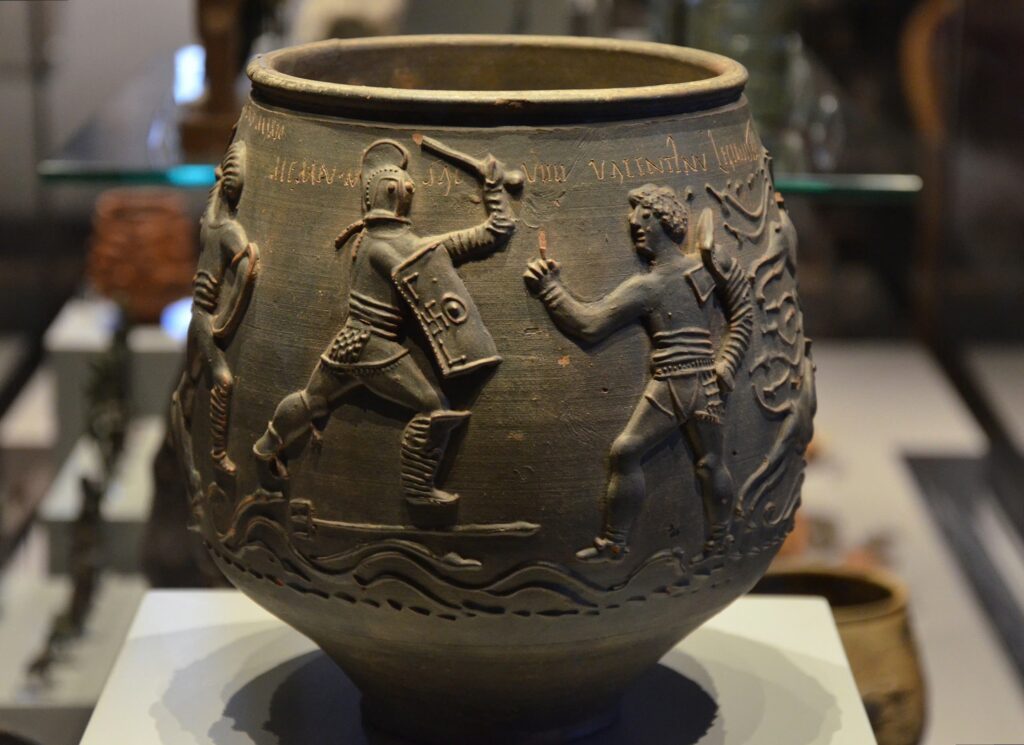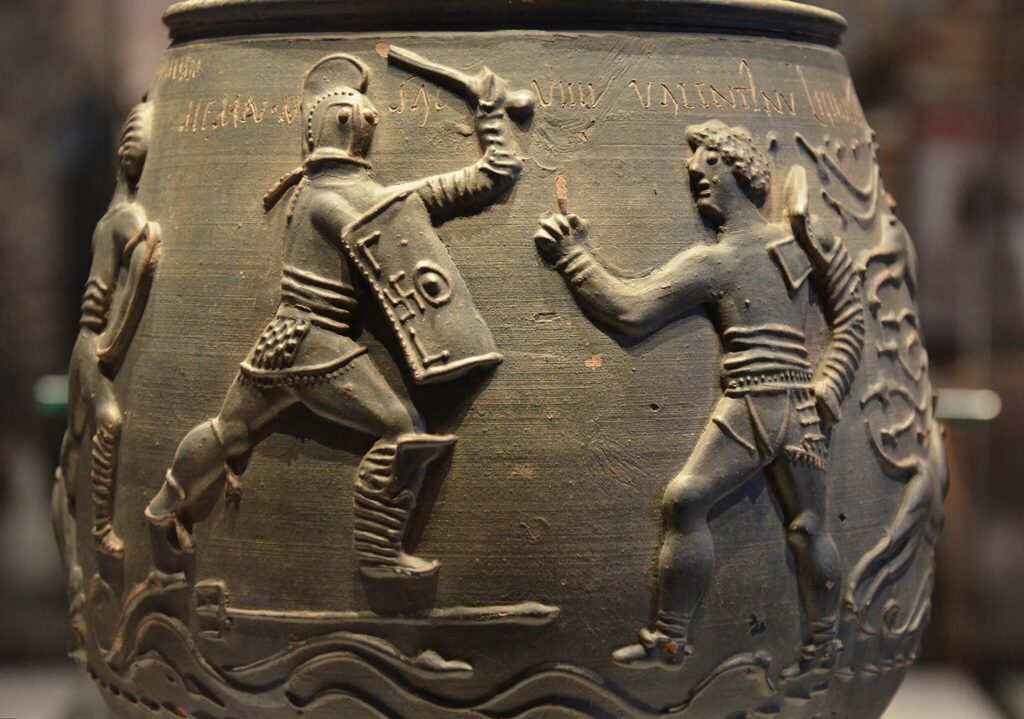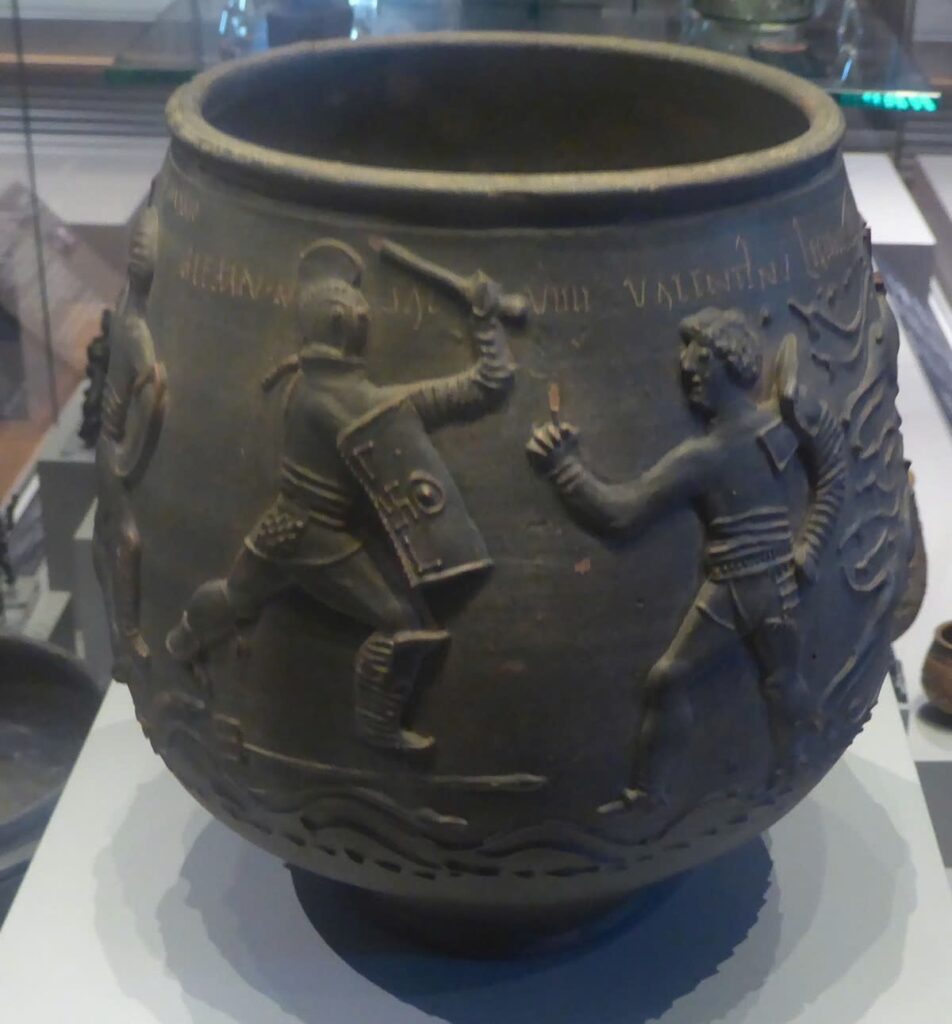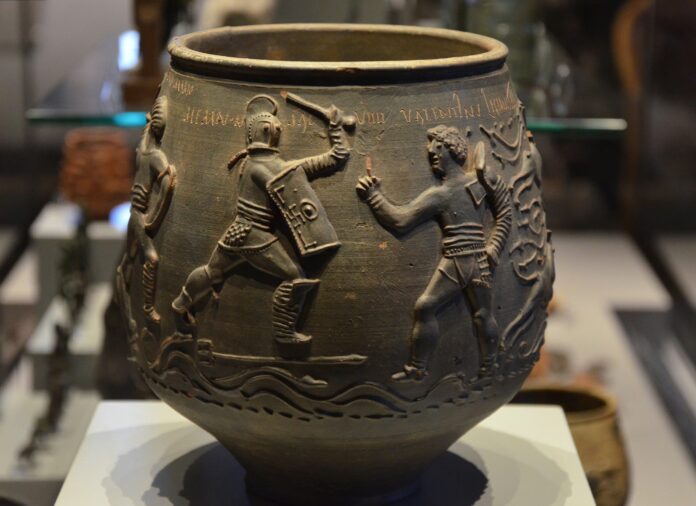A Clay Vessel’s Tale of Roman Spectacle

In 1853, archaeologists unearthed a remarkable clay vase from a Roman-era grave in Colchester, southeast England. Little did they know that this discovery would eventually shed light on the thrilling world of gladiatorial combat in ancient Britain. Recent analysis of the Colchester vase has revealed fascinating insights into the sporting events that once captivated audiences on the fringes of the Roman Empire.
The Vase’s Journey: From Souvenir to Funerary Urn

Originally crafted as a commemorative cup in the second century A.D., the Colchester vase later found a new purpose as a funerary urn. Standing 9 inches tall and weighing over 2.2 pounds, this artifact has puzzled historians for decades. Its intricate decorations led many to believe it was imported from continental Europe, where gladiatorial contests were commonplace.
Local Craftsmanship Confirmed
Recent studies have definitively proven that the vase was made with local clay, right in Colchester. This discovery highlights the town’s thriving pottery industry and its significance in Roman Britain. Known as Camulodunum in ancient times, Colchester boasted three theaters and the only chariot racetrack in Britain by the second century A.D.
Vivid Depictions of Gladiatorial Combat
A Window into Ancient Arena Battles

The vase’s surface tells a dramatic story through three distinct gladiatorial scenes:
- Human vs. Human: A battle between Memnon and Valentinus, depicting the classic matchup of a “secutor” (chaser) against a “retiarius” (net man).
- Human vs. Animal: “Bestiarii” (beast fighters) named Secundus and Mario face off against a formidable bear.
- Animal vs. Animal: A scene showcasing the variety of spectacles in the arena.
Clues from the Inscriptions
Intricate inscriptions on the vase offer tantalizing details about the gladiators. Valentinus is described as being from the 30th legion, while Memnon’s name is accompanied by the Roman numerals VIIII, indicating he had fought and survived nine times. These details likely echoed the promotional hype leading up to the fights.

The Mystery of the Cremated Remains
An Unexpected Occupant
Scientific analysis of the cremated bones within the vase revealed they belonged to a robust man over 40 years old at the time of his death. Intriguingly, his teeth suggest he originated from southwestern England or possibly beyond the British Isles. However, he was not one of the gladiators depicted on the vase.
Speculations on the Deceased’s Identity
Experts have put forth various theories about the man’s connection to the gladiatorial world. Some suggest he may have been an avid fan, while others speculate he could have been a retired gladiator who remained involved in the spectacle.
A Glimpse into Roman Britain’s Sporting Culture

The Colchester vase stands as concrete evidence that gladiatorial contests took place in Roman Britain. In the absence of written accounts, this artifact provides a vivid glimpse into the sporting events that once enthralled audiences in this far-flung corner of the Roman Empire.
Upcoming Exhibition
The Colchester vase will take center stage in an exhibition on gladiators at Colchester Castle, starting July 15. This display promises to offer visitors a unique opportunity to connect with the thrilling world of ancient Roman spectacle, right in the heart of modern-day Britain.

